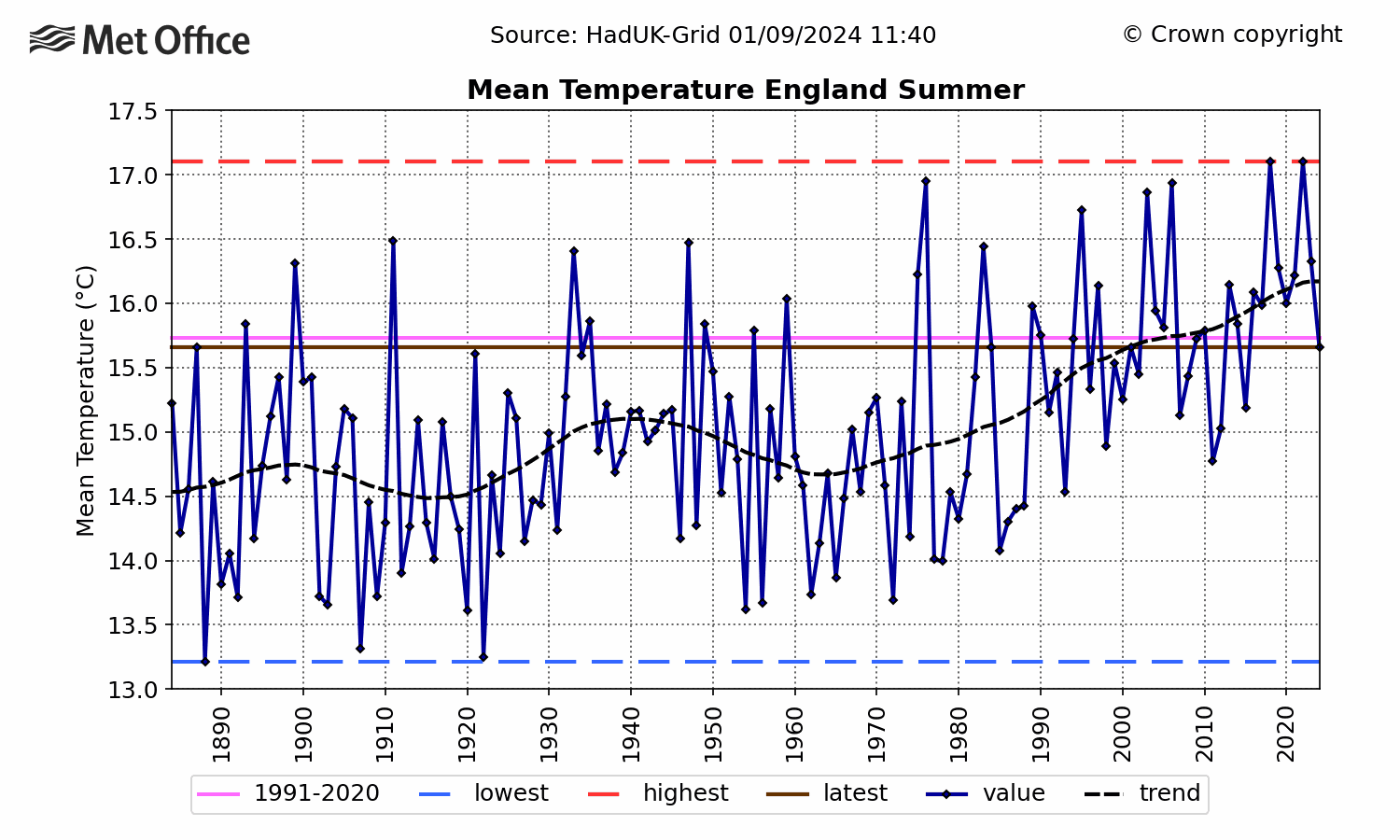By Paul Homewood
h/t Patsy Lacey
It is time this nonsense was ended for once and for all.
Talking about the weather may be a long-standing British tradition, but designing our homes to suit the climate has only recently become commonplace.
The idea of 'climate-proofing' our homes has now become a priority for some, and with good reason.
Quite apart from short-term weather threats, with temperatures frequently going from freezing to double figures in a matter of days, there is a long-term need for action, too.
A report compiled by scientists and the Met Office, launched by Environment Secretary Michael Gove in November, says global warming might see average summer temperatures increase by 5.4c and winter norms rise 4.2c by 2070.
The country is likely to see more extreme weather in the form of wet winters, flooding and summer heatwaves — and even wildfires.
At the same time, there's an energy crisis brewing. Back in 2016, the Institute of Mechanical Engineers forecast that as soon as 2025, the demand for electricity could outstrip its supply by as much as 40 per cent chiefly because of the country's growing population.
So what can be done in our homes — now and in the future — to save energy, push down ever-increasing fuel bills, and engineer more eco-friendly long-term designs?
EASY SOLUTIONS
'Most households could save hundreds a year and improve their green credentials with simple measures', insists Stephen Naughtie, a London-based domestic energy consultant.
He suggests households irrigate gardens from a water butt: 'It costs £50 but if you're on a water meter, you could save £100 in just one hot summer.'
In addition, Naughtie says sealing draughts, insulating the loft and moving sofas away from radiators all make homes warmer without even turning the heating up.
Meanwhile a low-flow shower and ultra-low flush toilet can save a combined total of up to 15,000 litres of water per person per year. Water-efficient washing machines could save 5,000 litres of water annually per person. All of these could save up to £160 per year.
Solar shading in the form of shutters, curtains or reflective blinds over windows is another way to prevent homes overheating in the sun and so reducing the need for air conditioning.
LAWNED ROOFS
In the long-term more fundamental changes to our homes may be needed to fight climate change and energy shortages.
Hillarys, an interior design and house fittings company, says there are many big changes that house design is going through to prepare for global warming.
Tara Hall, spokesperson for Hillarys, says: 'We've looked at the practical and often simple measures that all UK homeowners can start making now to ensure their homes are able to withstand more extreme weather conditions.'
These include 'lawned' green roofs which absorb sunshine and reduce the temperature in summer while aiding thermal efficiency in winter by helping contain heat inside.
LOOK TO FUTURE
Harvesting rain water and passive cooling — the strategic placing of windows, doors and walls to keep spaces cool in summer and warm in winter — are also becoming increasingly common in new homes.
The Unique Property Group is designing homes at Cricklewood in North London to be 35 per cent more energy-efficient than planning requirements. It's building them in a factory then transporting in sections them to the site.
'The modules can be specially wrapped within the factory to provide a high grade thermal fabric … to get close to zero emissions,' explains Unique's managing director, Sonny Gowans.
Village Makers — has a 51-home scheme at Great Oakley in Essex, where every property will have triple glazing plus solar panels and insulation that is so effective that little 'switch on' heating will be required. The stuff of science fiction? Not any more.
A UN report warns that the first effects of global warming on property may be felt in just 12 years so any action we take now could pay dividends quicker than we imagine.
It must be obvious to anybody with half a braincell that our summers are not going to 5.4C hotter by 2070, nor that winters will be 4.2 warmer.


Nor are winters getting any wetter, or summers drier:


My dad had a water but in our house in the 1960s, but it was not because of global warming. We also had curtains!
What saving water, sealing drafts and insulating lofts has to do with climate change, heaven knows.
Instead of repeating UN warnings that the first effects of global warming on property may be felt in just 12 years, why does not the Mail give its readers the real facts for a change, and help expose the lies?
As for Michael Gove, shouldn't he be more worried about statements like this, than fake UN pronouncements?
At the same time, there's an energy crisis brewing. Back in 2016, the Institute of Mechanical Engineers forecast that as soon as 2025, the demand for electricity could outstrip its supply by as much as 40 per cent chiefly because of the country's growing population.
from Climate Change Skeptic Blogs via hj on Inoreader http://bit.ly/2SXxaDY

No comments:
Post a Comment